Most people are familiar with acupuncture, where very fine filaments (‘acupuncture needles’) are inserted into specific acupuncture points on the skin to relieve pain or otherwise help sort out health disorders. (Performed correctly, with Japanese style acupuncture there is no discomfort when this is done, and most people find their treatments to be comfortable and relaxing.) However, not many people would know that the most concentrated area in the body for acupuncture points is the ears. So far we have discovered over 200 points in this small area, so it takes an experienced therapist to locate and treat them properly.
As there are so many points here, almost any part of the body can be treated just using the ears. Here is a small selection of some of the points and areas in the ear.
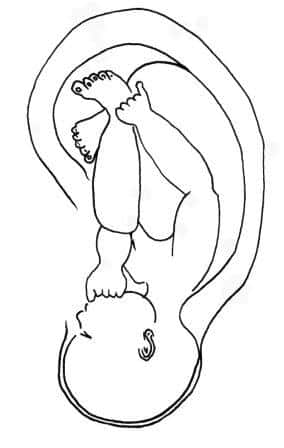 Locations of Ear Points
Locations of Ear PointsInterestingly the ear has been described as being similar to an inverted foetus, and most of the acupuncture points in the ear match this model. For example,
Ear points are most often used as part of a regular acupuncture treatment with points on the body as well. However, occasionally they might be used on their own.
The jury is still out on this, but the experience of many senior acupuncturists is that there is a very slim chance that ear piercing may result in a negative effect on the body. For example, on very rare occasions piercing the eye point on the lobe has caused a sudden deterioration of that person’s vision. To avoid any problems, we suggest
In the hands of an experienced therapist, auricular (ear) acupuncture points can be powerful tools to relieve pain and resolve health disorders, and as you can see the range of conditions that can be treated is very extensive. We are here to help, so if you have any questions about ear acupuncture or any health issue you may have, please feel free to get in touch.
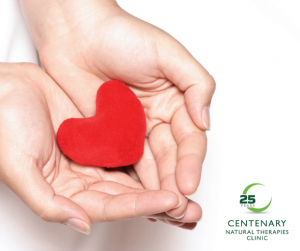
To celebrate our success, express our gratitude, and to support our community further, we will be providing 5 grants of $500.00 (totalling $2,500.00) to local charities or community groups that are making a difference (or have the potential to make a difference) in our local area.
So if you know a group who are doing great work, please let them know to apply at the 2021 CNTC Community Grants page. We would love to look after those who are creating a better world for others.
Round 1 Winner
Baby Give Back “give babies a safe start to life by providing families in crisis with essential baby items, in partnership with support agencies.” For more info on the wonderful work they do, please visit www.facebook.com/babygiveback .
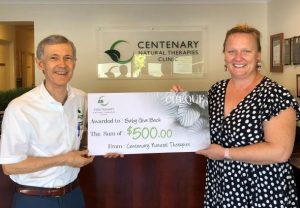
Round 2 Winner
4074 Care Connection are the worthy winners of Round 2. “We volunteer our time to collect goods for charities in our local community. Our main initiative is to make it easier for people to donate, by providing convenient and relevant collection locations.”

Round 3 Winner
Centenary Knitting, Sewing & Crochet Circle won $500 to support the community work they do. “We knit, crochet, and sew for: The homeless, Foster children, Domestic Violence, Ronald McDonald House, Baby Give Back, local Nursing Homes, and pretty much try to help wherever we can.”

Round 4 Winner
Congratulations to the Jamboree Heights Swimming Club for winning Round 4. The club will use the money to upgrade their equipment.
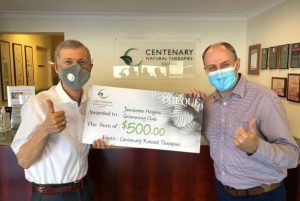
Round 5 Winner
Here we are presenting Lynn of Let’s Give a cheque for $500. They will use the money for essential items for children in high needs families.

Thanks to all of the winners of our Grants for the wonderful work you do for our community.
In 2022 we have decided to do another (single) $500.00 grant. Congratulations to Centenary Craft Circle (formerly Centenary Knitting, Sewing & Crochet Circle, who were our Round 3 winner last year). This dedicated group do so much good work to help (and brighten) our community, and are very deserving winners of our Community Grant. Thanks ladies!

We are hoping to make our $500 grant an annual event, and this year Baby Give Back were again a winner for the great work they do. Congratulations!

Collagen is well-known for its effect on improving the skin, hair and nails, but there has been considerable research recently on its role in repairing cartilage, and so helping improve pain and stiffness from osteoarthritis.
Collagen is actually the most common protein in the body. It is in all connective tissues, and is crucial for the stability, strength and elasticity of all the tissues and organs. The body contains at least 28 types of collagen, which are especially needed for cartilage, blood vessels, tendons, ligaments, skin, and bones. (Type I collagen helps the body form bones, gives skin its elasticity, and is essential for wound healing.)
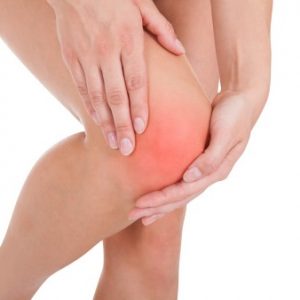
Cartilage contains special cells called chondrocytes that produce collagen and other substances needed for healthy joints. Normally, the deterioration of cartilage in a joint is matched by the production of new cartilage by the chondrocytes. However, if the output of the chondrocytes falls, the cartilage will deteriorate and osteoarthritis will develop, causing pain and stiffness in the joint.
If poor cartilage production is combined with mechanical stress in the joint (such as tight or weak muscles around the joint or poor alignment), this causes the release of pro-inflammatory chemicals which further breaks down the joint cartilage.
Typically, osteoarthritis (OA) gets worse over time. Medications for OA are limited to pain-killers and anti-inflammatory drugs, which do not reduce the rate of progression or help with the restoration of the cartilage. Natural sources of collagen (such as eggshell membrane) and nutritional cofactors have been shown to not only reduce joint pain, inflammation and stiffness, but to assist with the regeneration of the joint tissues.
For example, in a double-blind, placebo-controlled trial, participants were given a daily dose of an extract of eggshell membrane (Ovomet) or placebo for 30 days. The WOMAC Osteoarthritis Index questionnaire was used to assess their joint pain and dysfunction after 0, 1, 3, 5, 7 and 30 days. Those who were taking the eggshell membrane reported a gradual and significant decrease in pain and dysfunction from day 3 to day 30. After the 30 day period, their pain had already decreased by over 50%, whereas there was no significant difference for the placebo group.
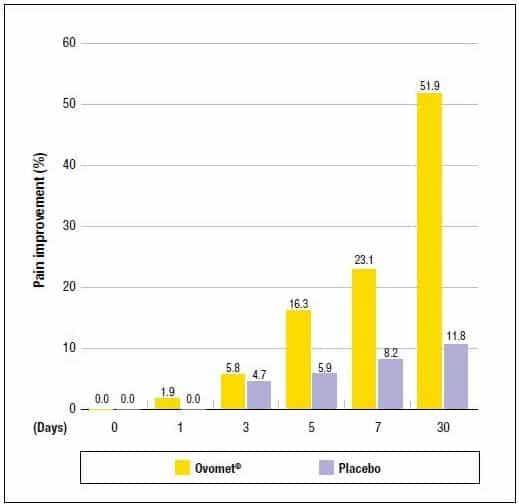
Arthritis pain improvement chart
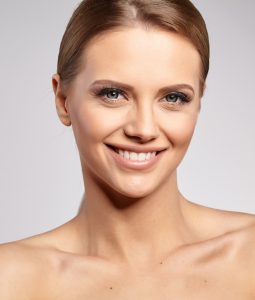
With time, collagen and elastin fibres become sparse and disordered, leading to a reduction of skin thickness and elasticity, causing wrinkles and sagging of the skin. Hyaluronic acid also plays an essential role in maintaining skin structure and hydration. The level of hyaluronic acid similarly decreases with age, resulting in a loss of skin hydration.
Eggshell membrane contains several components, including collagen, hyaluronic acid and glucosamine, which are found in the skin and have proven dermatologic effects. The production of collagen fibres in the skin is considered to play a principal role in physiological changes to the skin as it ages. Several studies have shown the effectiveness of collagen in improving the properties of the skin.
For example, one study found that at day 60, the skin elasticity of participants taking eggshell membrane had increased by 25%, while no significant changes were found in the placebo group. Those over 50 years old were found to have a greater improvement (29.67%) than those under 50 (20.60%). In another study, the skin firmness of those given eggshell membrane improved by a remarkable 66%.
Eggshell membrane as a supplement was also found to have a significant impact on hair quality, including improvement in hair thickness and growth, and reduction in hair breakage. Keratin is present in this membrane, which might account for the hair and nail health benefits for those taking it.
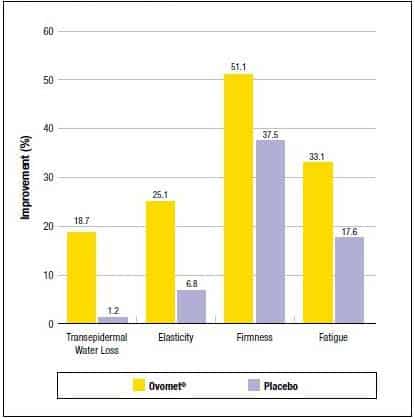
Skin improvement chart
If you suffer from arthritis or want to improve your skin, hair or nail quality, we have a high potency, professional-strength eggshell membrane product we recommend. (The product is vegetarian, and comes in one-a-day capsules.) If you are interested in using it, please book in to see one of our naturopaths who can prescribe it and determine the correct dosage for you.

Sepsis is a life-threatening condition which results from the body damaging its own organs trying to fight an infection. It was starting to take hold of his body, and his time was running out. Professor Rinaldo Bellomo, director of Intensive Care at Melbourne’s Austin Health, said the 40-year-old’s health had started to deteriorate significantly from COVID-19, with the man losing kidney function, and his blood pressure plummeting.
The man was given an initial dose of 30 grams of vitamin C over 30 minutes, then 30 grams over six and a half hours. “This is the equivalent of 5,000 oranges pumping through his veins,” Professor Bellomo said. An over-the-counter vitamin C supplement is 500mg, meaning this megadose was 60 times the normal dosage,
Sepsis is the most common cause of death in intensive care units, and a common cause of death for people gravely ill with COVID-19.
Professor Bellomo said after the patient had the megadose of vitamin C, the changes were “‘remarkable”. “In a short period of time, we saw improved regulation of blood pressure, arterial blood oxygen levels and kidney function,” he said. His temperature also improved.
A 2020 review of scientific evidence published in the Journal of the American Medical Association found high dose vitamin C given on its own or with steroids did not provide “significant survival benefit” for patients with sepsis or septic shock. However, Professor Bellomo said the previous trials used a lower dose of vitamin C; the amount in this case was 50 times greater than any other tried before for sepsis. (For more information about the case, please click here.)
(Note- Vitmain C is an amazing nutrient which can have a profound effect on the body, particulaly for infections or repair. Linus Pauling, regarded as the 16th most important scientist in history, was a big advocate of megadoses for a variety of conditions from colds to cancer and heart disease. Hopefully this case will stimulate an interest by the medical profession in the use of megadoses of nutrients such as vitamin C to treat a variety of serious illnesses.
However, large doses of any nutrient should be treated like a drug, and only taken under the direction of a qualified naturopath or other therapist highly trained in their use to resolve specific health issues.)

Many people with digestive issues will try avoiding gluten, and will often feel much better as a result. However, could this be causing them other problems instead?
Iodine deficiency is one of the three most common nutritional deficiencies, and the World health Organisation has said that Australia’s population has higher levels of iodine deficiency than normal. To combat this, in 2009 it became compulsory for iodine to be added to bread in Australia.
Iodine is very important for proper thyroid function, Your thyroid controls the rate of activity of the cells of your body, so if it is underactive, everything slows down, including your energy and metabolism. Hormones produced by the thyroid are important for brain function and development, growth and healing. So if your iodine levels are low, you can develop
Iodine deficiency can seriously affect children, especially at the foetal, newborn or infant stages, as their brains need thyroid hormone for proper development. A lack of iodine may cause a miscarriage or premature birth, and children with low iodine are also more likely to have attention deficit hyperactivity disorder (ADHD).
A world-renowned endocrinologist and expert in the field, Professor Creswell Eastman said that “Iodine deficiency has re-emerged in Australia in the last 10 years and it is now a significant public health problem. We know that 50 per cent of Australian women are iodine deficient so they are putting their pregnancy and foetus at great risk.”
Prof Eastman said mums with the worst cases of iodine deficiency could knock 15 points off their child’s IQ.
Unlike nutrients such as iron, calcium or vitamins, iodine does not occur naturally in specific foods. Instead, it is the level of iodine in the soil determines the level of iodine in the food, and so iodine deficiency occurs when the amount in the soil is low.
If you are trying to avoid gluten you may have a low iodine intake (especially if you avoid iodised salt as well). Please note that we are not advocating that if you are sensitive to gluten you should be eating bread! However, with any restrictive diet it is important to ensure you are getting enough of the right nutrients. If you would like to check if a lack of iodine or any other nutrient is affecting your health, you may like to book in a session with one of our naturopaths. Or even better, book in for a free Comprehensive Assessment, to find out what is going on in your body, what is causing any problems, and the best way to sort them out.
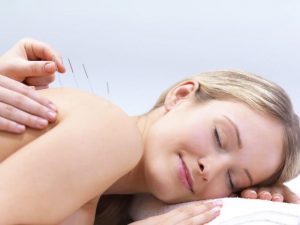
The withdrawal of codeine as an over the counter medication, and the potential opioid crisis, have made acupuncture an even more attractive treatment.
As a result, The Chief Medical Officer has recommended an application be made to the federal Minister for Health for acupuncture to be included in the Chronic Disease Management Program. Under this Program, doctors can refer a patient to an allied health therapist, and Medicare covers part of the cost of the treatment.
Some of the advantages of acupuncture in resolving pain are
As pharmaceutical drugs kill many more Australians than heroin does, these are important considerations.
The wheels of government turn slowly, but hopefully acupuncture will be included under Medicare soon. This would be fantastic news to all our clients who come to us to resolve their pain.
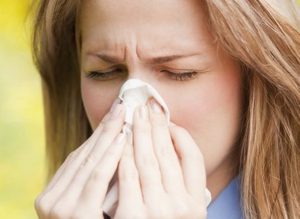
When you have hayfever, your immune system sees a harmless airborne substance as potentially harmful. Your immune system then produces antibodies to this substance. The next time you come in contact with it, these antibodies signal your immune system to release chemicals such as histamine into your bloodstream, which cause the symptoms of hayfever.
So the most common treatments for hayfever are antihistamine medications.
What is Histamine?
Histamine is a chemical produced by your body to
(As a neurotransmitter, histamine communicates important messages from your body to your brain.)
However, histamine’s main role is to cause an immediate inflammatory response. It serves as a ‘red flag’ to your immune system, notifying it of any potential attackers.
Histamine causes your blood vessels to swell, or dilate, so that your white blood cells can quickly find and attack the infection or problem. The build-up of histamine may give you headaches and leave you feeling flushed, itchy and miserable. This is a part of the body’s natural immune response, but if your body doesn’t break the histamine down properly, you could develop what is termed a histamine intolerance.
Because it travels throughout your bloodstream, histamine can affect your gut, lungs, skin, brain, and the entire cardiovascular system, contributing to a wide range of problems in the body. (Due to the many areas affected and the diverse symptoms, it can often be difficult to pinpoint and diagnose the cause of the problem in these cases.)
The body controls histamine levels by producing an enzyme called diamine oxidase (DAO). But if too much histamine or not enough DAO is produced, allergies will occur.
Foods can have a major influence on histamine levels, by containing histamine themselves, by causing the body to release histamine, or by blocking the release of DAO by the body.
Histamine-Rich Foods
Histamine-Releasing Foods
DAO-Blocking Foods
However, there are a number of foods that can help to reduce your histamine levels. Please note that freshness is the key with these foods when you have a histamine intolerance.
Low-Histamine Foods:
Raising your DAO levels is also important in combatting hayfever.
Although histamine blockers seem like they would help prevent histamine intolerance, these medications can actually deplete DAO levels in your body, so will make the hayfever worse in the long run.
Basic Level
Try to remove as many of the ‘Foods to Avoid’ and increase the ‘Foods to Have’ as much as you can, starting 1-3 months before the hayfever season. But most importantly, find the root cause for the histamine intolerance. If you are on a medication that is causing the intolerance, check with your doctor if you can be weaned off this medication.
If you have a histamine intolerance, you may not have to try to avoid these foods forever. It can be a short-term solution until your histamine or DAO levels return to their optimal ranges. (Depending on your unique make-up, you may find that you tolerate some foods better than others.)
Advanced Treatments
We have covered how different foods can affect your histamine levels, but why do some people have hayfever and others don’t? Almost any over-reaction by the immune system (such as allergies, food intolerances, or auto-immune disorders) has its origin in the digestive system. The two most common causes are
These probiotic strains are not normally available over the counter; instead they must be prescribed by a qualified therapist trained in this area, such as a registered naturopath.
When your immune system spots these large molecules, it decides that they are too big to be digested food, so it must be a foreign invader into the body, such as a virus or bacteria, and it attacks them. If your immune system over-reacts every time you eat something, eventually it may start reacting to other proteins it becomes exposed to, such as those in pollens, dust, etc., and then allergies such as hayfever develop.
(There are other causes for hayfever, but they are less common.)
If you are suffering from hayfever and would like to treat the real causes of the problem, we suggest booking in for a Comprehensive Assessment at our clinic. We can then have an in-depth look at what is happening in your body, what is causing the problem, and what can be done to sort it out. (Terms and conditions- the Assessment is a completely free service, with no obligations whatsoever.) Most people find their assessment very helpful, interesting and informative.
Our bodies are entirely made up of what we put in our mouth, and so how things work in our bodies is almost completely dependent on what we eat and drink. How well these ingredients are absorbed, how well they are formed into the different compounds and hormones the body needs, the reactions between these compounds, and how well all these processes are controlled determines our health (or health problems).
Naturopathy involves the use of natural medications and diet to improve how all these processes are taking place, and to resolve health problems and diseases. While this may sound like simply giving someone a few vitamins and a some diet changes, the human body is incredibly complex, and so naturopaths need to have a highly detailed understanding of
As you would expect, this takes a very high level of scientific and medical knowledge and experience. To register as a naturopath, you must have completed a four year full-time degree. You must also belong to a professional association, and complete additional Continuing Professional Development training every year.
(For more information, please visit our naturopathy page.)
Sarah (not her real name) came to the clinic with bad hives on her neck, arms, back and thighs. The hives had a significant impact on her appearance, and were causing her a lot of discomfort and distress.
Sarah had received an allergy skin-prick test, which showed she had sensitivities to 5 different foods. She had eliminated these from her diet, but this made no difference to her symptoms.
Her health history included a continual sinus infection, and she took four courses of antibiotics for this in 2019, which did not get rid of it.
Sarah took advantage of our free Comprehensive Assessment offer, and also had an Organ Function Test. The Test showed that her digestive functions were low, it was likely she had food intolerances, her liver was congested, and her adrenaline levels were high.
The Assessment also established that she had excessive inflammation in her digestive system, and that the congested liver was causing a build-up of toxins in her system. The food intolerances seemed to be the result of the weak and inflamed digestive system. As digestive issues, food intolerances, and skin conditions all usually respond well to naturopathy treatments, it was recommended she have a consultation with one of our naturopaths. Acupuncture treatments were also recommended to help reduce the inflammation in her digestive system.
At the initial session, her naturopath conducted further testing, including iridology (examining the irises of the eyes), examining her nails and tongue, checking her acidity levels, and testing her zinc status. From this she determined that Sarah’s digestive system was not breaking down and processing her food correctly. The partly-digested particles of food were entering her blood stream, and causing a reaction by her immune system. The constant triggering of the immune system in this way was the major cause of her hives. Her stress levels and liver function were also factors (itchy skin conditions are often related to the liver not functioning well).
A treatment plan was created for Sarah, to
Three practitioner grade, prescription-only supplements were given to address each of these areas.
The first product contained ingredients that
The second product was a combination of two immune-correcting and anti-inflammatory probiotic strains, designed to
The third product was a herbal formula to
Sarah was also given a Diet Plan to help identify and eliminate any specific dietary triggers for her hives.
At her second consultation in 4 weeks, Sarah was excited to report that the hives had cleared up completely. Her sinus infection had also improved significantly, and she no longer had to use a nasal spray for it.
As her hives and sinus infection were virtually eliminated, we turned to another health issue she had. For many years Sarah would wake up at 2 am, and most times couldn’t get back to sleep after that. This was affecting her energy levels, her mental function and clarity, and her mood.
On investigation, we found that Sarah’s Sympathetic Nervous System (SNS) was over-active. The SNS is associated with the ‘fight or flight’ response, and keeps the body from relaxing and going to sleep properly. It also increases the body’s stress response, disrupts the digestive system, causes muscle tension, increases blood sugar levels, puts additional strain on the heart (possibly raising blood pressure), and many other impacts on health.
Again, Sarah was prescribed a high-potency practitioner level supplement to address the underlying cause of her problem. The ingredients
At her next appointment 3 weeks later, Sarah was overjoyed to report that she was now sleeping through the night and getting 7-8 hours sleep each time.
It is important to note that every person and their conditions are different, and each case requires careful individual diagnosis of what is causing their problem. Sarah had a very quick improvement for several conditions she had endured for many years, but each person’s body improves at a different rate, and so improvement may take longer for another person. However, with the correct assessment, diagnosis, high-quality supplements or herbs, and/or dietary advice being followed, there will be good results in the vast majority of cases.
If you have health problem you would like to get rid of, please consider booking in for a Comprehensive Assessment. We can then look at what is going on in your body, what is causing the problem, and the best way to sort it out. (The Assessment is a completely free service, with no obligations whatsoever.)
The ‘microbiome’ is a popular topic at the moment for anyone interested in their health and well being, but what exactly it is? You may have heard about the good bacteria living in your digestive system, and might have thought about taking a probiotic to support them. Your body contains an internal community of a massive 38 trillion microbes (not just bacteria), and this community is referred to as your commensal microbiome, or microbiome for short. The guts of it is, when your microbiome is healthy it helps make you healthier, and when it is unhealthy it makes you less healthy.
When healthy and balanced, your microbiome has a range of wide-reaching effects on your health, such as creating important vitamins you need, helping to control and boost your immune system, assisting with waste elimination through healthy bowel functions, and even affecting your mood and mental state.1
However, diet, lifestyle and other factors can reduce both the number and the diversity of these organisms in our gut. This can create an environment where pathogenic (disease causing) organisms have the opportunity to establish themselves and ‘take over’ parts of your digestive system. This state of imbalance is termed ‘dysbiosis’, and often results in a broad range of health issues, including digestive problems, nutrient deficiencies, or a compromised immune system (which can lead to food intolerances, allergies, or frequent infections).
The following are the most common diet and lifestyle factors that can have a negative impact on the health of your microbiome.
Avoiding or addressing the diet and lifestyle factors mentioned above is important for improving the health and diversity of your microbiome. However, perhaps the most important thing you can do to help, is to consume a diet rich in plant based fibres, which will provide a great food source for the beneficial organisms to flourish.
Figure 1: Foods that Feed Your Microbiome
If ‘bad’ (pathogenic) bacteria and other organisms have established in your gut and are creating dysbiosis, there are specific natural products to correct this. For example, antimicrobial herbal medicines can be used, including pomegranate (Punica granatum),5 nigella (Nigella sativa),6 and myrrh (Commiphora myrrha).7,8 These herbs work to eliminate unwanted organisms in the gut.
Then, to regenerate and rebuild the health and diversity of your microbiome, specific probiotic strains can be used. Some of these include
So even though diet, lifestyle or antibiotic use can upset your microbiome, there are plenty of natural medicines and diet options to restore it’s health as well, and improve the wellbeing of your whole body.
If you have any digestive or immune problems, or want to improve your mood or general health and well being, we offer a free Comprehensive Assessment, to establish what is going on in your body, what is causing the problem, and the best way to sort it out. (Terms and conditions- the Assessment is a completely free service, with no obligations whatsoever.) Please call us on 3376 6911 if you have any questions at all, or ring or book online if you would like to make an appointment.
References
The above table and much of the information in this article is from a Metagenics blog titled ‘5 Ways You Might Upset Your Gut Microbiome and What to Do About It’.
1. D’Argenio S. The role of the gut microbiome in the healthy adult status. Clinica Chimica Acta. 2015;451(Part A):97-102.
2. Buschman H, Bright D. Big Data from World’s Largest Citizen Science Microbiome Project Serves Food for Thought. [Internet]. San Diego (CA): UC San Diego School of Medicine. 2018 [cited 2018 July 05]. Available from: https://health.ucsd.edu/news/releases/Pages/2018-05-15-big-data-from-worlds-largest-citizen-science-microbiome-project-serves-food-for-thought.aspx
3. Engen PA, Green SJ, Voiqt RM, Forsyth CB, Keshavarzian A. The Gastrointestinal Microbiome: Alcohol Effects on the Composition of Intestinal Microbiota. Alcohol Res. 2015;37(2):223-36.
4. Guilliams TG. The role of stress and the HPA axis in chronic disease management. Point Institute, Stevens point (WI). 2015;80.
5. Abdel-Haffez E, Ahmed A, Abdellatif M, Kamal A, Toni N. The efficacy of pomegranate (Punica granatum) peel extract on experimentally infected rats with blastocystis spp. J Infect Dis Preve Med. 2016;4(1):1-6.
6. Salem EM, Yar T, Bamosa AO, Al-Quorain A, Yasawy MI, Alsulaiman RM, et al. Comparative study of Nigella sativa and triple therapy in eradication of Helicobacter pylori in patients with non-ulcer dyspepsia. Saudi J Gastroenterol. 2010 Jul;16(3):207.
7. Fathy FM. Effect of mirazid (Commiphora molmol) on experimental giardiasis. J Egypt Soc Parasitol. 2011 Apr;41(1):155-77.
8. Basyoni MM, El-Sabaa AA. Therapeutic potential of myrrh and ivermectin against experimental Trichinella spiralis infection in mice. Korean J Parasitol. 2013 Jun;51(3):297-304. doi: 10.3347/kjp.2013.51.3.297.
9. Moré M, Swidsinski A. Saccharomyces boulardii CNCM 1-745 supports regeneration of the intestinal microbiota after diarrheic dysbiosis – a review. Clinical and Experimental Gastroenterology. 2015;8:237-55.
10. Anderson JM, Barrangou R, Hachem MA, Lahtinen SJ, Goh YJ, Svensson B, et al. Transcriptional analysis of prebiotic uptake and catabolism by Lactobacillus acidophilus NCFM. PLos ONE. 2012;7(9):e44409.
11. Mäkeläinen H, Saarinen M, Stowell J, Rautonen N, Ouwehand AC. Xylo-oligosaccharides and lactitol promote the growth of Bifidobacterium lactis and Lactobacillus species in pure cultures. Benef Microbes. 2010 Jun;1(2):139-48.
Did you know that acupuncture is the second most-used therapy on earth? It has been used for thousands of years on billions of people throughout the world.
Despite extensive research, the exact mechanism of how acupuncture works is still unknown. One of the areas acupuncture is best-known for is resolving pain, and in this regard it may be the result of
or a combination of these.
However, acupuncture is used for many conditions other than pain. On a more general level, one of the best ways to understand how acupuncture works is to think of the acupuncture points as tiny controls for the body, that can be turned up or down to adjust the way the body is behaving. There are many hundreds of these points, and over thousands of years we have learnt the ways they influence the body.
Acupuncture is known for resolving pain, however this is only the tip of the iceberg in terms of what conditions it can treat. As a small sample, is has been proven to be effective for anxiety, fatigue and nausea related to many chronic diseases, hayfever, morning sickness, etc. Many health practitioners may also recommend acupuncture as an adjunct treatment that may assist with IVF.
Acupuncturists as Health Professionals
As a result, acupuncturists are coming to be recognised as genuine health professionals.
Health Funds
The federal government performed a review of the evidence of effectiveness for all natural therapies, and in 2019 stopped health funds from covering any natural therapies except acupuncture, Chinese herbal medicine, remedial massage, and myotherapy, as there was strong evidence for the effectiveness of these treatments. (An appeal has been lodged in relation to naturopathy, as the latest evidence was not used in this regard, and naturopathy is likely to be also added to therapies health funds can cover.)
GST Exempt
Medical services are exempt from GST, and acupuncture, naturopathy and herbal medicine are all specifically listed as exempt services in the GST Act.
Hospitals
Acupuncture is of course widely used in hospitals in many Asian countries, especially China. (There is a hospital in Japan which only uses acupuncture.) However it is also used in many hospitals in western countries such as the United Kingdom, USA, Sweden, and in some hospitals in a limited capacity in Australia (including 2 in Brisbane).
Acupuncture to be Covered under Medicare?
The Australian Acupuncture and Chinese Medicine Association (AACMA) has approached the federal government to include acupuncture in the Chronic Disease Management Program. Under this Program, doctors can refer a patient to an allied health therapist, and Medicare covers part of the cost of the treatment.
Considerable research evidence was provided to the Chief Medical Officer on the management of pain by acupuncture, and especially chronic pain. As a result, he has recommended an application to the Federal Minister for Health for acupuncture to be included. So as a proven drug free alternative, acupuncture is being looked at favourably for the management of pain. The withdrawal of codeine as an over the counter medication, and the potential opioid crisis, have each made acupuncture an even more attractive option.
The earliest written records of acupuncture are around 200 BC, making it one of the oldest health care systems in the world. However there is some evidence that the practice is much older than that. Sharpened stones and long sharpened bones appear to have been used around 6,000 BC for acupuncture treatment.
Also, the body of a 5,300 year-old man was discovered frozen in the Italian Alps in 1991. ‘Otzi’ was covered with 61 tattoos (including dot-like points around joints), which some researchers believe may have been used as an early form of acupuncture. Some lines and dots were directly over areas which suffered from degenerative diseases, and many corresponded to traditional acupuncture points. So a simple form of acupuncture may have been practiced in Europe over 5,000 years ago.
There are 2 main styles- Japanese and Chinese acupuncture. The Japanese style
All of our acupuncturists use the Japanese style, We also only use the finest quality, pre-sterilised, disposable needles, which are made in Japan rather than in China. (These needles are hair-thin and designed for maximum comfort as well as effectiveness.)
If you have a health issue and would like to find out if acupuncture can resolve it, we offer a free Comprehensive Assessment. (Terms and conditions- the Assessment is a completely free service, with no obligations whatsoever.) Please call us on 3376 6911 if you have any questions at all, or ring or book online if you would like to make an appointment.

Valued at $120, your Assessment will help to uncover:
All this will be fully explained to you, and you can ask as many questions as you like. That way we can be sure to give you all of the right information, understanding and advice you need. Terms and conditions: This is a free, no obligation offer.